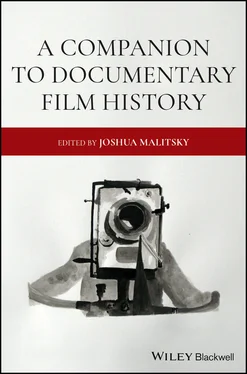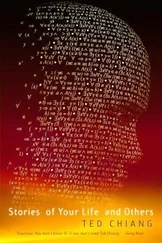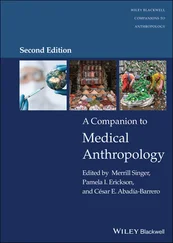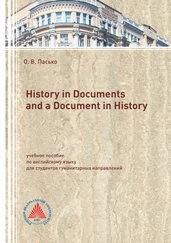Afrique 50 and Afrique sur Seine bear a specific relation to the site of colonial French West Africa (before political independence was secured in 1958 and 1960) in imperial geography, a region that stood as a key point of reference for African diasporic and pan‐African cultural, intellectual, and political developments in the postwar era. 1 When examined together, the films demonstrate how documentary voice‐over and montage techniques emerged in response to political conditions of constraint. By confronting or evading censorship restrictions and by addressing cross‐territorial movement in their production and circulation, the two documentaries are usefully understood as works that posed unsettling questions about crises in the representation of belonging across colonial and metropolitan publics.
René Vautier and Paulin Vieyra each published autobiographical accounts of their early documentary efforts and their confrontations with colonial authorities, and they often credit themselves with originating particular forms of anticolonial filmmaking that adopt the perspectives of respectively French metropolitan citizens or colonized subjects. Their own insistent activities of critical self‐definition indicate the deepening fault lines over cultural identity and belonging that emerged at a time when political mobilizations and social and intellectual movements began to dismantle prevailing colonial‐era articulations of race, nation, and empire. In retrospect, each project attests to an attempt to imagine a political future that would overcome the metropolitan domination of colonial territory and colonized peoples. These films have been at once singled out and marginalized, but their important position within documentary film history is revealed when we pay attention to their different inscriptions within African and French film histories.
Displacing Outrage and Mobilization to French West Africa: René Vautier and the Making of Afrique 50
In late July and August of 1949, two young French citizens, René Vautier and Raymond Vogel – the former a recent graduate of the national film school IDHEC (Institut des Hautes Études Cinématographiques) and the latter a graduate student in literature at the Sorbonne – left metropolitan France and arrived separately in Dakar. They joined one another in or near Mopti in the Niger River delta region, with the declared mission to shoot a documentary on the colonial administrative territory of French West Africa. The film that resulted, René Vautier’s Afrique 50 , holds a significant place in the history of anticolonialist documentary cinema. Its primacy as the “first French anticolonialist film” has underwritten its promotion and revival ever since its initial reception. 2 Yet around 1950, anticolonial contestation encompassed a range of distinct political stances. To take a critical anticolonial position did not necessarily mean articulating an explicit call for a nationalist revolution for political independence or state sovereignty. The film was a particular kind of French anticolonial film. It made an appeal to French citizens that was thoroughly informed by both French state republican ideals and by the French Communist Party’s (Parti Communiste Français, PCF) patriotic embrace of nationalist identifications to defend France during wartime resistance to Nazi Occupation. At the same time, it attested to the contemporary reality of regional political organizing, more internationalist in spirit, among groups of colonial citizens and subjects in the French West African territories, and it responded to the French colonial state’s violent suppression of this consolidating power.
Afrique 50 was the first film that René Vautier produced, although not the first he worked on. The circumstances of the film’s production were defined by its encounter with police surveillance and colonial administrative authority. This struggle over shooting, editing, and exhibition, as well as Vautier’s own trial and imprisonment, contributed to the film’s subsequent renown, even in the absence of widespread international availability. 3 Afrique 50 was initially a commissioned project to depict the conditions of rural village life in the colonial territories of French West Africa l’Afrique occidentale française (AOF). Its sponsorship by the League of Teaching (Ligue de l’Enseignement) marks the film’s uneasy relation to a civil‐society organization that had been closely linked to the French state’s ideals of national popular education and state secularism ( laicité ) since the period of the Third Republic (1870–1940) and revived under French national reconstruction efforts after the Liberation. Under the commission, Vautier and Vogel were meant to show primary and secondary‐school students in France how French West African villagers lived: it was to be “a small teaching film, in 16mm […] of images reflecting the quotidian reality of African peasantry” (Vautier 1998: 30). After encountering the violent reality of the colonial order, however, the filmmakers turned this work of state‐sponsored civic pedagogy into an explicitly oppositional work that undermined the hierarchical relations of sponsorship and the pedagogical representation of the colonies for the metropolitan center.
The documentary material for Afrique 50 was shot on silent 16 mm black‐and‐white film over several months from 1949 to 1950 in French West Africa, following the filmmakers’ travels from Dakar to Bamako to Abidjan, and in towns throughout the region, principally in the areas of present‐day Mali (Soudan Français), Côte d’Ivoire, and Burkina Faso (Upper Volta). This material was edited in Paris later in 1950 upon Vautier and Vogel’s separate returns to France. The two filmmakers had been briefly detained in French West Africa during their 1949–1950 journey and then further pursued by French police as they arranged for pieces of footage to be clandestinely sent back to the metropole through multiple intermediaries. For Vautier, this aspect of the production – the survival of the footage and his evasion of authorities – signified a story of solidarity between sites and people across Africa and France. In his account, the clandestine movement of the documentary footage served to embody the clandestine passage of the truth that could not be suppressed. Back in Paris in 1950, the League of Teaching, Vautier’s sponsor, disowned his work and complied with the police by handing over all the positives and negatives left at its office. When Vautier was detained again in Paris by inspectors who questioned him about the footage, he was finally able to retrieve a fraction of the seized footage (21 of some 60 reels) in secret, under their haphazard surveillance. Vautier managed to have this material developed by splicing the footage to the end of reels of undeveloped pornographic films that film laboratories customarily allowed to pass. After he completed and screened the film in 1950, Vautier was convicted of shooting without administrative authorization under the Laval Decree and served a prison sentence of a little more than a year from 1951 to 1952 (Vautier 1998: 45)
In the immediate postwar period, this Laval Decree set strict limits on authorized audiovisual recording, as well as the circulation of films, in the colonial territories, and it constrained documentary filmmakers within the French colonial empire. 4 The 1934 law took its name from Pierre Laval, who served as Minister of the Colonies between his terms as Prime Minister. Laval’s role in the Vichy government had led to his conviction for high treason and execution by De Gaulle’s new Republic after the Liberation. Officially known as the “Décret du 8 mars 1934,” the Laval Decree was applied first to the jurisdiction of French West Africa, before other territories. This priority can perhaps be explained by the particular interwar political importance of French West Africa for administrators, policymakers, and propagandists who spurred a reform movement called colonial humanism that sought to recast colonial governance and control colonial publicity circuits around new tenets of benevolent scientific administration and economic development. 5
Читать дальше












